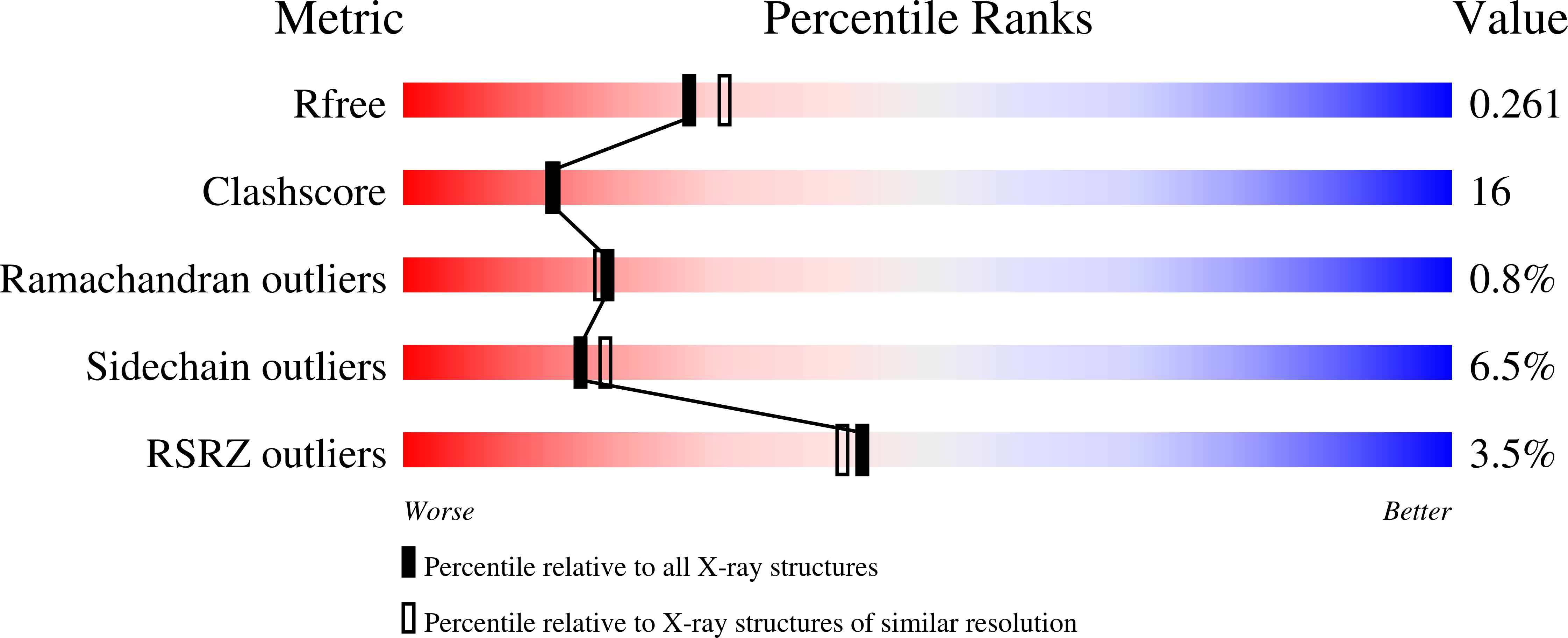Structural basis for activation and inhibition of the secreted chlamydia protease CPAF
Huang, Z., Feng, Y., Chen, D., Wu, X., Huang, S., Wang, X., Xiao, X., Li, W., Huang, N., Gu, L., Zhong, G., Chai, J.(2008) Cell Host Microbe 4: 529-542
- PubMed: 19064254
- DOI: https://doi.org/10.1016/j.chom.2008.10.005
- Primary Citation of Related Structures:
3DJA, 3DOR, 3DPM, 3DPN - PubMed Abstract:
The obligate intracellular pathogen Chlamydia trachomatis is the most common cause of sexually transmitted bacterial disease. It secretes a protease known as chlamydial protease/proteasome-like activity factor (CPAF) that degrades many host molecules and plays a major role in Chlamydia pathogenesis. Here, we show that mature CPAF is a homodimer of the catalytic domains, each of which comprises two distinct subunits. Dormancy of the CPAF zymogen is maintained by an internal inhibitory segment that binds the CPAF active site and blocks its homodimerization. CPAF activation is initiated by trans-autocatalytic cleavage, which induces homodimerization and conformational changes that assemble the catalytic triad. This assembly leads to two autocatalytic cleavages and removal of the inhibitory segment, enabling full CPAF activity. CPAF is covalently bound and inhibited by the proteasome inhibitor lactacystin. These results reveal the activation mechanism of the CPAF serine protease and suggest new opportunities for anti-Chlamydia drug development.
Organizational Affiliation:
College of Biological Sciences, China Agricultural University, Beijing, China.















